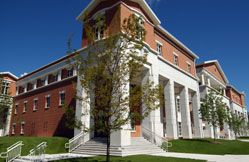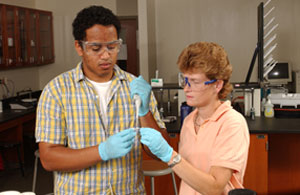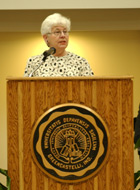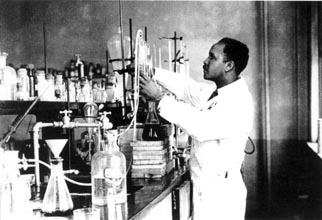DePauw Cited in Inside Higher Ed Story on "Next Generation" of Science Buildings
March 6, 2008
 March 6, 2008, Greencastle, Ind. - "Science facilities are on the minds of many a college administrator. Most of the boxy buildings from the '50s and '60s are no longer doing the job, at a time when undergraduate science enrollments are beginning to swell," begins an Inside Higher Ed article. It notes the efforts of Project Kaleidoscope (PKAL) "to change (or, more precisely, add to) the questions that college officials are asking as they plan the next generation of campus facilities that house science and technology classrooms and laboratories."
March 6, 2008, Greencastle, Ind. - "Science facilities are on the minds of many a college administrator. Most of the boxy buildings from the '50s and '60s are no longer doing the job, at a time when undergraduate science enrollments are beginning to swell," begins an Inside Higher Ed article. It notes the efforts of Project Kaleidoscope (PKAL) "to change (or, more precisely, add to) the questions that college officials are asking as they plan the next generation of campus facilities that house science and technology classrooms and laboratories."
Doug Lederman writes, "The group's overall focus is on helping colleges  create strong undergraduate programs in the so-called STEM fields (science, technology, engineering and math), but a central part of its quest for improving the 'learning environment' is to challenge colleges to reconceive how they approach the literally physical environments: the classroom and lab."
create strong undergraduate programs in the so-called STEM fields (science, technology, engineering and math), but a central part of its quest for improving the 'learning environment' is to challenge colleges to reconceive how they approach the literally physical environments: the classroom and lab."
His story concludes with the observations of Thomas Kazee, provost of Furman University. "Kazee and other Furman officials attended a PKAL workshop several years ago at DePauw University as Furman was just beginning to plan its new facility, and found the meeting invaluable. 'It opened up a whole new world for me,' Kazee said. 'My background is in political science, but this helped give me the knowledge of what I should do as provost to stimulate the conversations around science education.'"
around science education.'"
Access the complete story at Inside Higher Ed.com.
Jeanne L. Narum, executive director of Project Kaleidoscope, delivered the keynote address when DePauw re-dedicated the renovated and expanded Percy Lavon Julian Science and Mathematics Center on November 1, 2003.
![]() [Download Video: "Signals" 481KB] "When a university like DePauw dreams about and realizes spaces for science such as these it sends signals within and beyond this campus about what is important to your community," she stated.
[Download Video: "Signals" 481KB] "When a university like DePauw dreams about and realizes spaces for science such as these it sends signals within and beyond this campus about what is important to your community," she stated. ![]() [Download Audio: "Yesterday vs. Tomorrow" 334KB] "These kind of spaces signal that you understand the difference between yesterday and tomorrow, that you understand how different is the time in which 21st century
[Download Audio: "Yesterday vs. Tomorrow" 334KB] "These kind of spaces signal that you understand the difference between yesterday and tomorrow, that you understand how different is the time in which 21st century DePauw graduates will live and work from times past."
DePauw graduates will live and work from times past."
The three-year renovation and expansion of the Julian Center nearly doubled the size of the building and provides outstanding new laboratory space, equipment and technology that supports the teaching and learning of science at DePauw.
Percy Lavon Julian was a 1920 graduate of DePauw. His research -- some conducted on the Greencastle campus -- led to the development of a low cost method of producing cortisone, as well as a synthethic drug for the treatment of glaucoma, among other breakthroughs. Dr. Julian's life story was told in a 2007 NOVA special, "Forgotten Genius."
Back